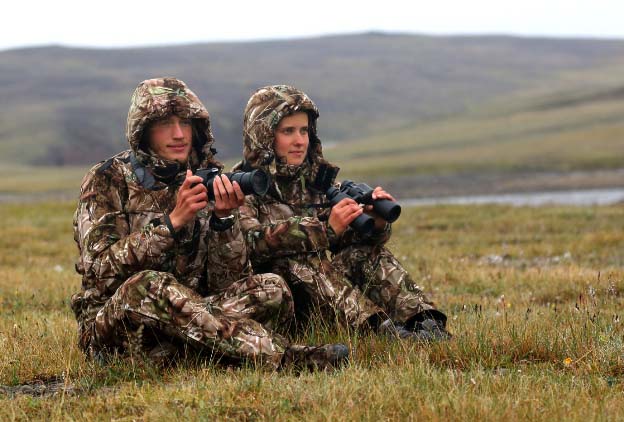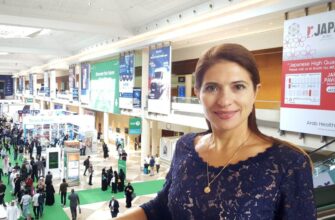The results of a study of 175 pairs of mammals conducted by scientists of Saint-Petersburg University (SPBU) with the support of Russian Scientific Foundation, confirmed that all mammals (kangaroo, whales, walruses, horses, reindeer, saiga, musk oxen, beluga), same as people, have the need to keep the mother and/or child in the left field of vision. The fact that the right hemisphere, which receives information through the left eye can promptly responds to them.
The same happens in human space, when the mother takes the child with her left hand (“left-hand tren”). According to the head of a group of scientists-biologists of associate Professor of SPSU E. B. Malashichev, although this fact was known to scientists before, but “the evolutionary explanation of this phenomenon still has not been given. We found that these behavioral characteristics of a person associated with a difference between the hemispheres, manner and speed of information processing has ancient evolutionary roots.” A research group under the leadership of Yegor has been studying various aspects of brain asymmetry (i.e., a functional inequality of the left and right hemispheres of the brain) and lateralizing behavior (i.e., unilateral preferences in behavior, usually associated with asymmetry of the brain). First of all we are talking about the evolution of these phenomena and their role in the life of the animal in nature.
We asked Karina Andreevna Karenina, Junior researcher of the Department of vertebrate Zoology St. Petersburg State University and member of the group of researchers, about mother’s love, seen by scientists in the group: “How long a calf remains with the mother varies greatly depending on the species of mammal. Of the investigated species, the most long-lasting and enduring relationship we found in whales. The young of this species remains in the parent group even in adulthood, a mother and a cub all her life travel and hunt together. Other types of the most durable connection are formed by the mothers with the daughters. For example, the kangaroo daughter remain on the territory where the mother lives, or occupy neighboring territory. Mother and daughter can regularly graze together or meet occasionally throughout life. While sons typically leave the mother at puberty and unlikely to cross paths with her in the future.”
The study has important potential for research of other animals, such as vertebrates with highly developed social behaviour, and for human too. That is why this topic is actively studied in the world. First of all, the study can help the development of children and the prevention its violations.
On the question of how animals peculiar evolution in the development process, how they affect modernity, Karenina K. A. said the following: “Instincts, as well as other characteristic of the species, is subject to change in the course of evolution. A variety of factors in life affect the chise of signs, will it remain or disappear. As for modernizing, here the important role is played behavioral plasticity and learning. Depending on the environmental conditions and the personal experience of individuals will differ behavior of even genetically identical individuals. If we talk about mammals, here in the formation of the “modern”, corresponding precisely to those specific conditions in which the animal was born, a huge role plays the bond between mother and baby. With the mother as with an experienced guide, the cub first acquainted with all elements of the environment. For example, moving from the mother, the cubs can remember migration routes, learn to find food and distinguish objects, master the skills of social interaction. Some species even transmit cultural traditions from mother to baby. For example, the use of different objects as tools for obtaining food is passed to the baby when it observes the actions of the mother. Moreover, the mother may deliberately “show” method for the cub, performing the actions slowly in the presence of a baby, and not just using these “tools” in everyday life”.
«In the Stepnoi reserve in the Astrakhan region we once, in the second half of may, watched the story of lost saiga – shared Karina one of the curious facts of observation, – this day, to sweltering heat, at dawn came a huge group of more than 500 species, many females were already accompanied by their newborn calves. When the antelopes came to the water occured the revival – the cubs begin to play with each other, the adult males try not to lose “their females”, young males are plotting slot tournaments. In this hectic, apparently, one of the young and lost my mother. The whole group left the waterhole, a lone cub was left and ran along the shore, loudly beckoning the mother is characterized by a low “BA-a-a”. After a few hours there was heat, and cub all wandered in search of its mother. Several times he came close to our shelter, sniffed it, and clearly knew that there is someone alive. We could do nothing to help saiga, and continued monitoring.
In the afternoon, the exhausted cub came in and laid down in the shallows. He had a few chances to survive, because the mother would likely to have migrated with his band long gone. But we underestimated the vitality saiga and in the evening he was still alive. Apparently, plunging the stomach and legs in the water, the cub was able to maintain a normal body temperature, despite the unpleasant heat. More we were surprised by the happy ending of the story. That evening, just at twilight, the pond ran up the female, bleating invitingly. Apparently, she was separated from his group and made the way back to the artesian in search of her cub. When meeting the female carefully sniffed the cub and immediately allowed him to drink milk. In the nature of other people’s young saiga female did not feed others, so we have no doubt that the couple reunited.”
Source: Saint Petersburg University





